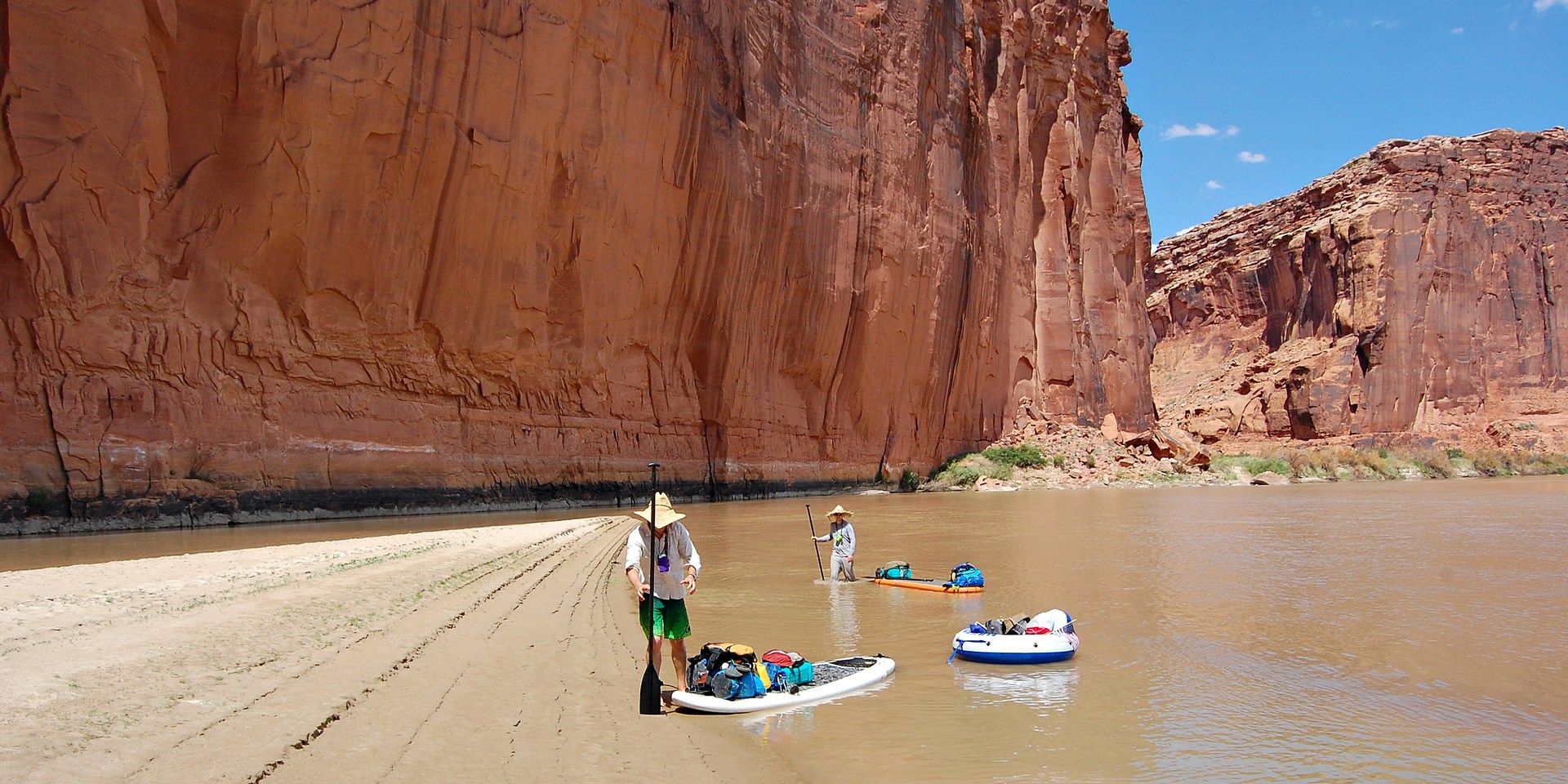You are here
The River
The Green River is the chief tributary of the Colorado River, covering parts of Wyoming, Utah, and Colorado. The river runs through some of the nation's most spectacular water-accessible canyon country. The level of the river fluctuates throughout the summer months, but channels keep the river navigable for most watercraft in low water. This well-known, 44-mile, 3-day stretch of the Green River leads through Labyrinth Canyon. You'll spend three days in a canyon that is is rimmed with towering spires and colorful sandstone walls that engulf the adventurer as the river carves ever deeper toward the confluence with the Colorado River. Naturally, if hardcore whitewater is what you’re after, this is not the section of the river for you. This section of the Green, like many other sections of the river, consists of easy, flat water that can be experienced by kayak, canoe, or stand-up paddleboard.
It is important to remember that this area is remote, so be prepared to be self-sufficient. This includes bringing drinking water, as the river contains high levels of silt and salt, and it is not easy to filter. There are no designated camping spots or services along this section of the river, though sand bars that are suitable for camping appear every mile or so during the summer months.
Once you have embarked down the river, the sandstone canyon walls start to be revealed. From this point on, adventure seekers will leave the everyday grind to be transported into another world, governed only by the flow of the river and the presence of the rock surroundings.
Three Canyons is the first notable side canyon landmark off to the west after Trin-Alcove Bend. This spot is where three box canyons all converge. This is roughly 4.5 miles from the Ruby Ranch put-in, and it is considered a heavily used site. Paddlers may want to consider an alternative campsite. Note that there are some notable geological features along this increasingly serpentine section of the river. Almost Arch, a partial arch within the rockscape, illustrates the continuous erosion of the river terrain.
Ten Mile Canyon, about 12 miles downstream from Ruby Ranch, is the next prominent point. There is ample camping along the Keg Spring Bottom sandbar just before Keg Spring Canyon. This is a particularly beautiful area that is surrounded by sheer canyon walls that rise to the sky.
The river turns, heading west where you will see the saddle of the Bowknot Bend landmark. The river turns back on itself in this long, meandering, 7-mile gooseneck section, forming a complete 180-degree loop. If you have the time and energy for a side hike, Spring Canyon Point is a great destination where you can grab some photographs that capture the river flowing in both directions from a single perspective. This is a prominent river feature along the journey, and it is a good place to check your map for orientation. If paddlers are looking for a good canyon to explore on foot, taking out at Spring Canyon Bottom offers a nice retreat along BLM Road 140.
A mile past Bowknot Bend, paddlers will find Barrier Creek trickling out from Horseshoe Canyon, another large side canyon system. This canyon is less popular than the Spring Canyon Bottom route, and it could easily become its own multi-day exploration.
Cottonwood Bottom rests 5 miles further down river. Paddlers will find this a nice take-out for camping along Cottonwood Bottom. This sandbar lies directly across from Hell Roaring Canyon, offering beautiful views of the surrounding red rock landscape. This area was notable for its distinctive spires and rock towers. Camping here allows for a relaxing pace for the last day before taking out at Mineral Bottom.
The Mineral Bottom final take-out point always arrives faster than one expects after spending three amazing days on the Green. Here, outfitters will be waiting for your pick up based on your arranged agreements. A one-hour shuttle back up BLM 129 takes you back to Moab.
Getting to the River
From Moab, take a shuttle to the Ruby Ranch put-in using one of the few outfitters in town. You can find a BLM list of shuttle drivers here. Expect this bumpy and dusty shuttle trip to take about 90 minutes from Moab.
The Ruby Ranch put-in is deceiving at first, as it appears to be farmland rather than canyon country river hunters are expecting. This all quickly changes once paddlers begin to float the Green River south.
Logistics + Planning
Current Weather: Powered by Dark Sky






























Comments
Sign In and share them.